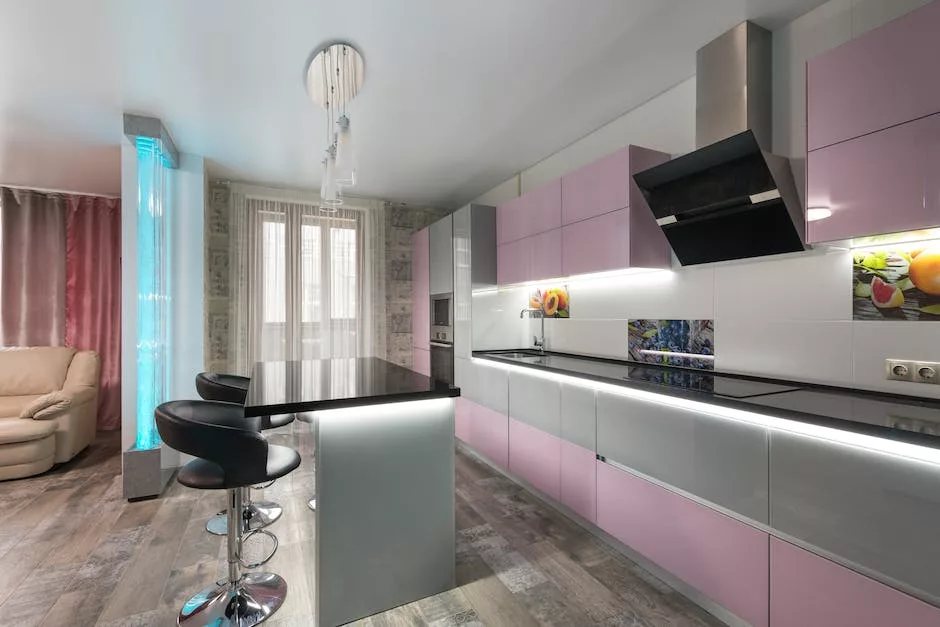Introduction
On August 9th, we will delve into the concept of Pink Zones. Pink Zones refer to designated areas or regions that are considered safe and secure for women and marginalized communities. These zones aim to create an environment where individuals can freely move, work, and live without fear of harassment, violence, or discrimination. By understanding the concept of Pink Zones, we can explore the measures taken to ensure safety and inclusivity for all members of society.
The Importance of Understanding Pink Zones in Urban Planning

Urban planning can be a complex and serious business, but there’s one aspect of it that deserves a little more attention and a touch of humor: pink zones. Yes, you heard it right, pink zones! These peculiar areas play a crucial role in urban planning, and understanding them is essential for anyone interested in the development of our cities.
So, what exactly are pink zones? Well, they are not some magical places where everything is pink and fluffy, although that would be quite delightful. Pink zones are actually designated areas within a city that have specific regulations and restrictions when it comes to development. They are like the rebellious teenagers of urban planning, always pushing the boundaries and challenging the status quo.
Now, you might be wondering why they are called pink zones. Is it because they are painted pink? Well, not exactly. The term “pink zone” actually originated from the color-coding system used by urban planners to categorize different areas based on their development potential. Pink zones, in this context, represent areas that have high potential for growth and development.
Understanding pink zones is crucial because they can have a significant impact on the overall development of a city. These areas are often strategically located, close to transportation hubs, commercial centers, or other key amenities. They are like the popular kids in school, attracting all the attention and investment.
But here’s the catch: pink zones also come with a set of rules and regulations that can sometimes be quite strict. It’s like being the popular kid but having a curfew and a strict dress code. These regulations are put in place to ensure that the development in pink zones aligns with the overall vision and goals of the city.
For example, in some pink zones, there might be restrictions on the height of buildings to preserve the skyline or maintain the character of the neighborhood. In others, there might be guidelines on the types of businesses that can operate to create a vibrant and diverse community. It’s like having a cool party, but with a bouncer at the door making sure only the right people get in.
Understanding these regulations is essential for developers, investors, and even residents who want to be a part of the pink zone action. It’s like knowing the secret handshake to get into an exclusive club. By understanding the rules, they can navigate the pink zone landscape more effectively and make informed decisions about their investments or living arrangements.
But let’s not forget the humorous side of pink zones. After all, they are like the mischievous troublemakers of urban planning. They challenge the norms, push the boundaries, and sometimes even cause a little chaos. It’s like having a rebellious teenager in the family who keeps you on your toes.
So, the next time you hear about pink zones in urban planning, don’t just think of them as boring areas with regulations and restrictions. Think of them as the vibrant, dynamic, and sometimes quirky parts of a city that add character and excitement. They are the places where dreams are built, where innovation thrives, and where the future of our cities takes shape.
In conclusion, understanding pink zones is crucial for anyone interested in urban planning. These areas, with their regulations and restrictions, play a significant role in shaping the development of our cities. So, let’s embrace the humor and quirkiness of pink zones and appreciate the important role they play in creating vibrant and livable urban environments. After all, who said urban planning couldn’t be a little fun?
Exploring the Impact of Pink Zones on Local Communities
Pink Zones: The Impact on Local Communities
Hey there, folks! Today, we’re diving deep into the fascinating world of Pink Zones. What are they, you ask? Well, buckle up and get ready for a wild ride as we explore the impact of Pink Zones on local communities.
Now, you might be wondering, what on earth is a Pink Zone? Is it a magical land where everything is pink? Well, not quite. Pink Zones are actually designated areas in cities or towns that are dedicated to promoting and supporting local businesses. Think of them as a haven for entrepreneurs and small business owners.
So, why are they called Pink Zones? Is it because they’re painted pink? Nope, not even close. The name actually comes from the idea of “pink money,” which refers to the purchasing power of the LGBTQ+ community. Pink Zones aim to create an inclusive and welcoming environment for all, regardless of their sexual orientation or gender identity.
But what makes Pink Zones so special? Well, my friends, it’s all about the perks. These designated areas often come with a range of benefits for local businesses. From tax incentives to reduced regulations, Pink Zones are designed to give entrepreneurs a leg up in the competitive world of business.
And let’s not forget about the community aspect. Pink Zones are all about fostering a sense of togetherness and support. They provide a platform for local businesses to collaborate, network, and share resources. It’s like a big, happy family, but with a lot more business cards.
But wait, there’s more! Pink Zones also have a positive impact on the local economy. By promoting and supporting local businesses, these designated areas help to keep money within the community. It’s like a never-ending cycle of support and growth. And who doesn’t love a thriving local economy?
Now, I know what you’re thinking. Are Pink Zones just a passing trend? Will they fizzle out like last year’s fashion? Well, fear not, my friends. Pink Zones are here to stay. In fact, they’re popping up in cities and towns all over the world. It’s like a pink revolution, and we’re all invited to the party.
But it’s not all rainbows and unicorns in Pink Zones. Like any good thing in life, there are challenges to overcome. One of the biggest hurdles is ensuring that Pink Zones remain inclusive and diverse. It’s important to create an environment where everyone feels welcome, regardless of their background or identity.
So, how can we make sure Pink Zones continue to thrive and make a positive impact? Well, it’s all about community involvement. Local residents, business owners, and city officials need to work together to create a vision for their Pink Zone. It’s a team effort, folks, and we’re all in this together.
In conclusion, Pink Zones are more than just a pretty color. They’re a powerful tool for promoting and supporting local businesses. With their range of benefits and community-focused approach, Pink Zones are making a real impact on local communities. So, let’s embrace the pink revolution and support our local entrepreneurs. Together, we can create a world where every zone is a Pink Zone.
Strategies for Creating Safe and Inclusive Pink Zones in Cities
Pink Zones: Creating Safe and Inclusive Spaces in Cities
Have you ever walked down a street and felt a sense of unease? Maybe you noticed a lack of diversity or a general feeling of exclusion. Well, fear not! The concept of Pink Zones is here to save the day and transform our cities into safe and inclusive spaces for everyone.
Now, you might be wondering, what exactly are Pink Zones? Well, think of them as designated areas within a city that prioritize safety, diversity, and inclusivity. These zones aim to create an environment where everyone feels welcome and accepted, regardless of their gender, race, or background.
Creating a Pink Zone is no easy task, but with the right strategies, it can be done. Let’s dive into some tips and tricks to help you transform your city into a vibrant and inclusive Pink Zone.
First and foremost, it’s essential to involve the community in the process. After all, they are the ones who will be benefiting from these safe spaces. Hold town hall meetings, organize focus groups, and listen to the concerns and ideas of the people. This way, you can ensure that the Pink Zone truly reflects the needs and desires of the community.
Next, it’s time to tackle the issue of safety. Pink Zones should be places where everyone feels secure and protected. Implementing proper lighting, surveillance cameras, and regular police patrols can go a long way in creating a safe environment. Additionally, organizing self-defense classes and workshops can empower individuals and give them the tools to protect themselves.
Now, let’s talk about diversity. Pink Zones should be a celebration of different cultures, races, and backgrounds. Encourage local businesses to showcase diverse products and services. Host cultural festivals and events that highlight the richness of various communities. By embracing diversity, Pink Zones can become vibrant melting pots of different cultures, fostering understanding and acceptance.
Of course, inclusivity is a crucial aspect of Pink Zones. No one should feel left out or marginalized. Implementing accessible infrastructure, such as ramps and elevators, ensures that everyone can navigate the area comfortably. Additionally, creating gender-neutral bathrooms and providing resources for the LGBTQ+ community sends a clear message of inclusivity and acceptance.
Now, let’s add a touch of humor to the mix. After all, who said creating safe and inclusive spaces couldn’t be fun? Organize quirky events like “Dress as Your Favorite Historical Figure Day” or “Pajama Party in the Park.” These lighthearted activities not only bring people together but also create a sense of joy and camaraderie within the Pink Zone.
Lastly, don’t forget to spread the word about your Pink Zone! Utilize social media platforms, local newspapers, and community newsletters to raise awareness. Encourage residents and visitors to share their positive experiences within the Pink Zone, creating a buzz that will attract even more people to these inclusive spaces.
In conclusion, Pink Zones are a fantastic way to transform our cities into safe and inclusive spaces. By involving the community, prioritizing safety, embracing diversity, and promoting inclusivity, we can create vibrant Pink Zones that celebrate the uniqueness of every individual. So, let’s roll up our sleeves, put on our thinking caps, and get to work in making our cities the best they can be. Together, we can create a world where everyone feels welcome, accepted, and safe.
Conclusion
In conclusion, learning about pink zones on August 9th can provide valuable information and insights into areas that are considered high-risk or dangerous. Understanding the characteristics and factors that contribute to pink zones can help individuals make informed decisions and take necessary precautions to ensure their safety.



